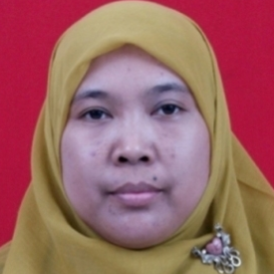
Winanti
Work place: Information System Department, STMIK Insan Pembangunan Tangerang, Banten, Indonesia 15810
E-mail: winanti12@ipem.ac.id
Website:
Research Interests: Computer Science & Information Technology, Computational Learning Theory
Biography
Winanti: Every day the author works as a lecturer in the department of information systems at STMIK Insan Pembangunan and focuses on research in e-learning, Learning Community, Culinary community, education technology. The author has produced publications indexed by Scopus and indexed by Google Scholar according to his research field. Every day the author works as a lecturer in the department of information systems at STMIK Insan Pembangunan.
Author Articles
Integrating QR Code to e-Class System for Managing Attendance Lecture Services in Higher Education
By Winanti Adi Nugroho Budi Haryanto Nana Supiana Erick Fernando
DOI: https://doi.org/10.5815/ijieeb.2024.04.06, Pub. Date: 8 Aug. 2024
Currently attendance is still done manually by recapping each lecturer's attendance sheet. The method used is the prototype method and testing using the User Acceptant Test (UAT) method. This takes a long time, even misinterpretations of existing absences sometimes cause problems when giving salary receipts to lecturers, besides that, reporting to campus management also takes time. The lecturer attendance system can help the finance department to calculate lecturer teaching attendance faster and more easily, which can be used to calculate salaries and evaluate lecturer attendance. The system at the implementation stage and during implementation the average teaching attendance of lecturers is easier to control. Some of the features in this attendance system include Check-in, Lecturer, profile, History, Schedule, Help, Tutorial and Chat Group. Apart from that, the main menu also provides information regarding the check-in time limit, waiting time for the next check-in, campus information, and application updates. The system was built with a QR Code and is Android-based to make things easier for lecturers, admin, and the finance department.
[...] Read more.Smart Learning Community at Culinary Community with SECI Model Adoption: Systematic Literature Review
By Winanti
DOI: https://doi.org/10.5815/ijeme.2022.04.01, Pub. Date: 8 Aug. 2022
The problem in the learning community in the culinary field is that there is still a lot of cooking knowledge that is lost because the person concerned dies before being inherited, the many types of dishes that are still separated in small groups, the emergence of various types of fast food that do not pay attention to the correct way of cooking with recipes, methods, and processes according to Health standards. Culinary is an alternative business that is very promising and supports the community's economy and a culinary tourism trend that is currently in great demand by all groups. From these problems, we need a learning community in the field of culture that can be a solution. The learning community components are seen from four perspectives, namely, explore where the author uses the SECI model, and explain where knowledge is disseminated through mobile learning with features tailored to user needs. The practice begins with selecting the recipe, the ingredients used, the cooking process, validation, and feedback from the participants. And the engage perspective obtained good interaction from participants and to produce new recipes requires learning that is done repeatedly by combining various recipes, ingredients, and methods so that new recipes are produced that have unique and interesting characteristics and have taste, aroma and deliciousness and good nutritional value. The number of references used were 72 papers sourced from journals as many as 54 papers (75%) and the remaining 18 papers (25%) sourced from conferences, websites & white papers, and research reports. There were 15 papers published in 1991 – 2010 and 2011 – 2021 as many as 57 papers. This research is still limited to the learning community component in the culinary field, seen from four perspectives, and has not discussed the model that has been validated by experts. Participant motivation and learning outcomes will be discussed in the next research
[...] Read more.Component Learning Community for Informal Education to Support Culinary Community at Era New Normal Covid-19: A Systematic Literature Review
By Winanti Francisca Sestri Goestjahjanti
DOI: https://doi.org/10.5815/ijitcs.2022.01.03, Pub. Date: 8 Feb. 2022
Informal education will be successful as an alternative for the community because not all people are able to receive formal education. This study uses a qualitative method with a systematic literature review (SLR) technique to look for learning community components in informal education to support learning in the culinary community in the new normal era of Covid-19. The author collects, studies, and analyzes reference sources according to the specified keywords. Found 53 papers from 2002 to 2021 with background authors from academia, industry, and the public sector with reference sources from journals, conferences, white papers, and research reports. Systematic literature review results obtained 6 components of learning community in informal education, namely content, forum, method, technology, figure/layout, and human/social resources. The six components as a reference and the author's first step in the next research through searching for the characteristics of the learning community in the culinary field, then making a learning model of the culinary community. Because of the importance of the learning community component in informal education to help community members share knowledge, solve problems, share common goals and interests among community members.
[...] Read more.Other Articles
Subscribe to receive issue release notifications and newsletters from MECS Press journals